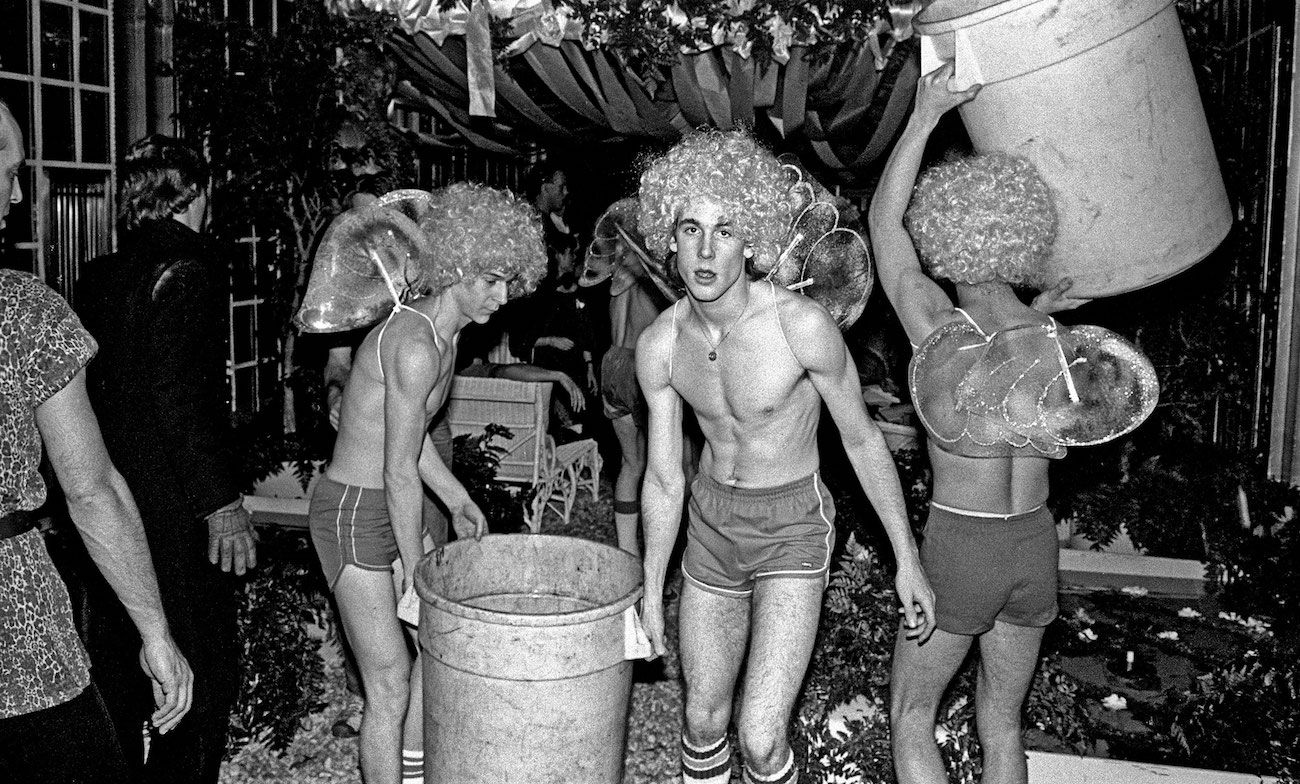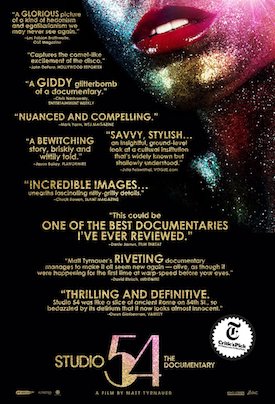 For 33 months, from 1977 to 1980, the nightclub Studio 54 was the place to be seen in Manhattan. A haven of hedonism, tolerance, glitz, and glamour, Studio was very hard to gain entrance to and impossible to ignore, with news of the celebrities on the dance floor filling the gossip columns daily. Steve Rubell and Ian Schrager, two college friends from Brooklyn, succeeded in creating the ultimate escapist fantasy in the heart of the theater district. Rubell was the outgoing bon vivant who wanted to be everybody’s friend and was photographed with every celebrity who entered the club, and Schrager was the behind-the-scenes creative mastermind who shunned the limelight. Studio 54 was an instant success and a cash cow, but the drug-and-sex-fueled dream soon imploded in financial scandal and the club’s demise. Steve Rubell died in 1989, but now, for the first time, Ian Schrager tells the whole unvarnished story in his own words. Using Schrager’s revelations and a treasure-trove of rare footage shot inside Studio 54, Matt Tyrnauer (Valentino: The Last Emperor and Scotty and the Secret History of Hollywood) constructs a vivid, glorious portrait of a disco-era phenomenon, and tells the story of two friends who stuck together through an incredible series of highs and lows. I sat down with Matt Tyrnaeur to discuss his riveting and provocative new documentary.
For 33 months, from 1977 to 1980, the nightclub Studio 54 was the place to be seen in Manhattan. A haven of hedonism, tolerance, glitz, and glamour, Studio was very hard to gain entrance to and impossible to ignore, with news of the celebrities on the dance floor filling the gossip columns daily. Steve Rubell and Ian Schrager, two college friends from Brooklyn, succeeded in creating the ultimate escapist fantasy in the heart of the theater district. Rubell was the outgoing bon vivant who wanted to be everybody’s friend and was photographed with every celebrity who entered the club, and Schrager was the behind-the-scenes creative mastermind who shunned the limelight. Studio 54 was an instant success and a cash cow, but the drug-and-sex-fueled dream soon imploded in financial scandal and the club’s demise. Steve Rubell died in 1989, but now, for the first time, Ian Schrager tells the whole unvarnished story in his own words. Using Schrager’s revelations and a treasure-trove of rare footage shot inside Studio 54, Matt Tyrnauer (Valentino: The Last Emperor and Scotty and the Secret History of Hollywood) constructs a vivid, glorious portrait of a disco-era phenomenon, and tells the story of two friends who stuck together through an incredible series of highs and lows. I sat down with Matt Tyrnaeur to discuss his riveting and provocative new documentary.
Danny Miller: I’ve always been so fascinated by Studio 54. Fascinated and a bit repulsed by the whole velvet rope mystique and knowing I probably never would have been allowed in. But the dichotomy between the exclusivity of the club and its reputation as a “haven for inclusivity and acceptance” is so interesting.
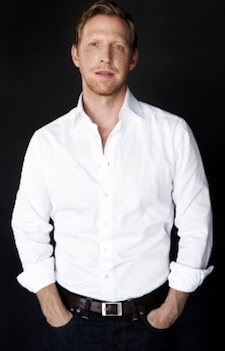 Matt Tyrnauer: It’s a contradictory premise. Andy Warhol said that Studio 54 was a dictatorship and the outside and a democracy on the inside. I think that’s relatively true and that the velvet rope aspect of the place might have been one of the seeds that led to its demise. But there were many seeds including Steve and Ian being completely blinded by success and greed.
Matt Tyrnauer: It’s a contradictory premise. Andy Warhol said that Studio 54 was a dictatorship and the outside and a democracy on the inside. I think that’s relatively true and that the velvet rope aspect of the place might have been one of the seeds that led to its demise. But there were many seeds including Steve and Ian being completely blinded by success and greed.
At least the exclusion wasn’t just based on the old standard of who was rich enough to get in.
No, not at all. While the premise of the velvet rope may have been inherently undemocratic, they were not choosing the predictable power people in New York. Many of those people, the Rockefellers and the Astors, the denizens of gentlemen’s clubs, and the preppies from the Hamptons were blatantly turned away at the door. These were the establishment people who had always had carte blanche in the city and were not used to being turned away. But Studio also turned away the “B and T” group, the “bridge and tunnel people” who would head to Manhattan on the weekends.
They were snobs and anti-snobs at the same time.
Yes, but there were so many ironies, because Steve and Ian were basically bridge and tunnel people themselves. Their first nightclub was in Queens. I mean, it was FOR the bridge and tunnel crowd! They had cut their teeth on the Saturday Night Fever crowd. But the whole Tony Manero culture had nothing to do with Studio 54. This was a completely different exploitation of disco that was on a different track from the glorification of the outer borough polyester shirt and gold chain kind of clientele.
I wonder what kind of guidelines the people manning the door at Studio 54 were given. If you were a certain type of celebrity, you were obviously getting in, but were they also told to welcome the gay and trans community?
I think the door policy was a bit of a mystery. But look, the whole thing came from underground club culture which Steve and Ian knew about. This was their swerve from that — they took the energy, the excitement, and the naughtiness of the underground club scene and repackaged and rebranded it in a way that made them multimillionaires. In a way, they invented the iPhone version of a nightclub! They built a better mousetrap and then rode that rocket into the stratosphere for 33 months.
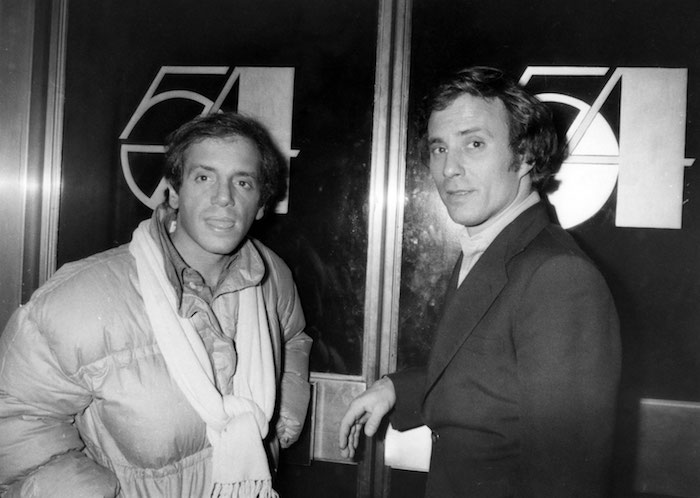
Steve Rubell (left) and Ian Schrager stand outside the door of Studio 54 in New York City, December 14, 1978. Credit: Photofest.
It seems like they really changed the social fabric of New York at that time.
It’s really astounding because Steve and Ian were these schlubs from Brooklyn who overnight became the social arbiters of New York. Such a thing was probably not possible until that very moment. Before that, Mrs. Rockefeller was the social arbiter of New York City, but Steve and Ian detected a shift in the culture and they rode that for all it was worth. So one day, the old families of New York are ruling New York, and the next day, Steve Rubell is — with Andy Warhol, who understood the changes that were happening, right at his side.
Seeing how unbelievably successful they were, I’m stunned at the way they crashed and burned. Do you think their downfall was mostly because of greed? Naiveté? Stupidity?
I think it was all of those things. Plus the fact that while all that was happening, society was shifting again during those 33 months. New York went from being an anarchistic Taxi Driver kind of place to a much more buttoned-down city during this time. In a way, Studio 54 was heralding the recovery of New York from the low depths of the 1970s.
I can’t help but think that they could have avoided most of their troubles if they just weren’t so greedy.
Skimming off the top was pretty endemic at that time, but as the prosecutor in the film said, skim 10 percent, not 80 percent! They were really pigs about it and were still playing by the old rules. I think they sensed that they needed to clean up their act, and Ian told me, it’s not in the film, that they were going to try to make it all right and clean up the books but that they never got a chance to because they were caught.
I wonder if it had just been Ian alone if that would have happened sooner.
We’ll never know. They were all skimming, but it’s true that Ian was more of a businessman. They both got drunk on their own success but Steve was the one shooting his mouth off. Ian didn’t talk to anybody, he was an introvert then and he still is. But Steve talked to everybody. It was one of the charms of Steve Rubell that he treated everyone the same, so he was just as likely to whisper how much money they were making into Calvin Klein’s ear as he was the busboy or his latest trick and who knows where that information was going to go.
I did find Ian Schrager to be a very compelling, sympathetic character in the film. Were you surprised by his honesty?
Well, I’d asked him to be honest and I said I wouldn’t make the movie unless he told me the whole story. Most of what he says in this movie are things he never said before.
When he talks about going to prison, you can just see the agony in his face.
Yeah. He never wanted to talk about that stuff again, which is why he waited 40 years to do it. And then I think he regretted having done it.
Really?
We were fighting for months after he saw the first cut. But one of his adult daughters finally said, “Dad, everything you object to in this film is the best thing in the film.”
Were you already familiar with his father, “Max the Jew,” and his underworld connections to Meyer Lansky?
No, not at all! On the day he agreed to do the film, Ian whispered to me, “I’ll tell you about my father, I’ve never done that before.”
Do you think his family’s connection to the mob is what allowed Studio 54 to operate without all of their licenses in place?
Well, I don’t think that Studio 54 was a mafia operation, not at all. But I do think that while many nightclubs had to pay “protection,” and even those that did were still vulnerable to the mob, Studio might have gotten a pass because Ian’s father’s friends were probably saying, “Leave those kids alone.” I think they had a kind of nudge-wink from the mafia underworld.
But in the end they seemed to be their own worst enemies, and having the infamous Roy Cohn as their lawyer didn’t seem to help very much.
There was a time when I think Cohn could have gotten them off, but their problems were so complex and always getting worse. I think Roy Cohn gave them bad advice and then Steve went rogue and started implicating the Carter White House in a big cocaine scandal which made the whole thing into a federal case. It was a real mess.
And the times were changing so fast, especially with the advent of the AIDS crisis, that it also seemed like they were some kind of sacrificial offering by politicians.
Studio 54 was the epitome of the culture of decadence and promiscuity that defined the late 1970s that hit a brick wall with the HIV/AIDS crisis. All of that coincided with Steve and Ian’s demise. Looking back on it, it seems like there were these historical forces that merged to create a totally different society: the rise of Ronald Reagan and the conservative political movement, a kind of light McCarthyism that policed social mores including the Just Say No anti-drug initiative, and then the unspeakable horror of AIDS which was a tear in the human fabric that was exploited by politicians like Rudy Giuliani who wanted to “clean up” gay culture, close the bath houses, and so on. The country was suddenly imposing a poliltician-driven morality against what people saw as our permissive society. The world seemed to change very quickly.
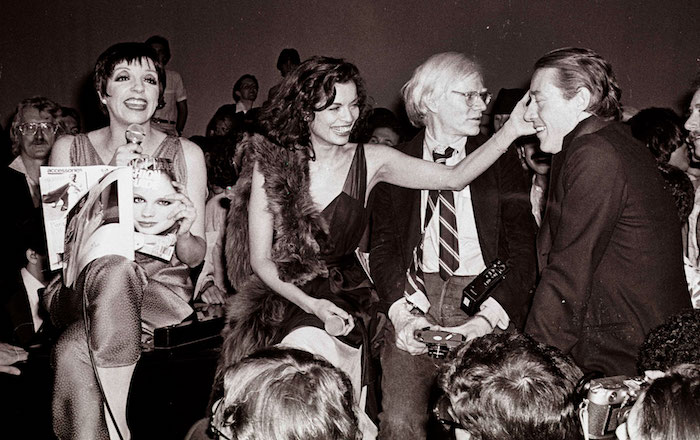
From left: Liza Minnelli, Bianca Jagger, Andy Warhol, and Halston at Studio 54. Photographer: Adam Scull.
Fascinating. Such a hard right turn. I know you were going for a very different story here, but were you ever tempted to sit down with some of the surviving regulars of Studio 54 like Liza Minnelli or Bianca Jagger?
Yes and no. Bianca is on the record as saying she’d rather die than talk about Studio 54 these days. She’s a human rights activist and doesn’t want to go there. And Liza has spoken about it before but in the end I thought that celebrity interviews would be a kind of trap. I wanted to tell the story of these two men who have this enormous rise and fall. These celebrities who frequented the club were almost a footnote. For me, it’s better to see them in the archival footage such as the Michael Jackson interview in the film than to have a famous person 40 years later not saying much of interest and having the audience pulled out of the film as they sit there and contemplate the plastic surgery the celebrities have had.
The archival footage in the film is just remarkable. Did you find that before you began shooting?
I found out about it after we started but before we started editing. It was several hours of 16 mm. film shot by NYU film students inside Studio 54. The film had never even been processed, it was found in a barn in upstate New York! We processed it and were thrilled by the wonderful footage that we found.
It really made me feel like I was there, even though I never would have been allowed into that damn club! Do you think if Steve Rubell were still alive that he would have participated?
Oh God, yes, if Steve were around, Ian probably wouldn’t have gotten a word in!

